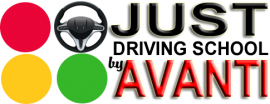 Guide signs tell you where you are, where you are going, and how to get somewhere. These signs come in a variety of colors, shapes and sizes. Route markers are used to identify numbered roadways or roadways designated for special purposes. These include county routes, state routes, U.S. routes, interstate routes, off-interstate routes such as business loops, forest routes, and routes designated for trucks.
Guide signs tell you where you are, where you are going, and how to get somewhere. These signs come in a variety of colors, shapes and sizes. Route markers are used to identify numbered roadways or roadways designated for special purposes. These include county routes, state routes, U.S. routes, interstate routes, off-interstate routes such as business loops, forest routes, and routes designated for trucks.
Green-colored square and rectangular signs provide information about destinations and distance. Destination signs tell you where you are, where you are going, or how to get to a particular place from the roadw
ay you are on. These types of signs often include directional arrows to indicate which road, exit, or lane to use. Distance signs indicate the distance in miles from certain locations, roadways or exits ahead of you.

A special type of distance sign, called a milepost is posted at intervals along sections of numbered highways and freeways to indicate your location on the roadway within a jurisdiction. Numbers start at the south end for north-south routes and the west end for the east-west routes. For example, if you are driving west on the interstate and see a MILE 20 sign, you are 20 miles east of the western state boundary line. Numbering for milepost may also start at junctions where routes begin.
Construction Signs
Orange construction signs alert you that you are in or about to enter a construction or work area. Cones, drums, reflectors, flares, barricades, flashing warning lights or other objects may also be used to guide drivers. In many construction zones, special workers with flags or handheld signs assist drivers in getting safely through the area.




 Various traffic control devices are used in road construction and maintenance work areas to direct drivers and pedestrians safely through the work site and to provide for the safety of highway workers
Various traffic control devices are used in road construction and maintenance work areas to direct drivers and pedestrians safely through the work site and to provide for the safety of highway workers
Be prepared to reduce your speed and use caution when directed to do so by a sign, flagger and/or police officer.eas to direct drivers and pedestrians safely through the work site and to provide for the safety of highway workers
Construction and maintenance signs are used to notify drivers of unusual or potentially dangerous conditions in or near work areas. Most signs used in highway and street work areas are diamond shaped.
Flaggers are often provided in highway and street work zones to stop, slow or guide traffic safely through the area.
Flaggers wear orange vests or jackets and use red flags or stop/slow panels to direct traffic through work zones
Channeling Devices
Barricades, vertical panels, drums, and comes are the most commonly used devices used to alert drivers of unusual or potentially dangerous conditions in highway and street work zones. These devices are used to guide the drivers safely through work area, and at night, they may be equipped with warning lights. When a ROAD CLOSED sign is displayed, do not drive on this road. Look for a detour or another route.
NOTE: Stripes on barricades and panel devices slope downward in the direction traffic must travel.
Service Signs






Blue service signs inform the driver of nearby services, including call boxes, hospitals, rest stops, telephones, restaurants, gas stations, and roadside motels. In the case of gas, food, lodging or camping signs, they may be posted with other signs provided by specific businesses.
Recreational Signs
 Brown recreational signs are in the shape of a rectangle or trapezoid and tell you about nearby places of cultural interest and public recreation such as historic sites, museums, and national parks.
Brown recreational signs are in the shape of a rectangle or trapezoid and tell you about nearby places of cultural interest and public recreation such as historic sites, museums, and national parks.  Square-shaped brown signs with symbols tell you where you can find restrooms, trails, swimming areas and other facilities located within recreational area. Recreational signs for privately operated areas, such as theme parks, are usually green or have their own distinctive design.
Square-shaped brown signs with symbols tell you where you can find restrooms, trails, swimming areas and other facilities located within recreational area. Recreational signs for privately operated areas, such as theme parks, are usually green or have their own distinctive design.



International Signs
International signs use symbols instead of words. Many of these signs are used here in the U.S. and as international travel increases, you are likely to encounter more of them.
Local Traffic Signs
Cities and towns have their own traffic signs for parks, libraries, bus and subway routes, public beaches, scenic routes, and so on. Local regulatory signs are also found on private roadways. Keep in mind that these signs may have irregular or unfamiliar shapes and color schemes.



